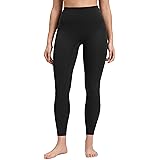Embarking on a cutting phase to achieve a shredded physique demands a meticulous approach to nutrition. While the journey often involves discipline and strategic training, the foundation of successful body recomposition lies squarely in your dietary choices. Understanding which foods not only support fat loss but also aid in muscle preservation and satiety is paramount. The video above highlights 10 excellent staples for a cutting diet, and here, we will delve deeper into the science and practical applications of these powerful fat loss foods, providing expert insights to optimize your nutritional strategy.
Optimizing Your Cutting Diet: The Power of Strategic Fat Loss Foods
A successful cutting phase is characterized by a controlled caloric deficit, designed to encourage fat oxidation while minimizing muscle catabolism. This delicate balance is achieved not just by eating less, but by eating smarter. The foods you choose significantly impact your metabolic rate, satiety levels, and micronutrient intake, all critical factors when pushing your body to its leanest state. Incorporating nutrient-dense, high-protein, and fiber-rich options is key to maintaining energy, curbing hunger, and supporting muscle tissue.
Lean Protein Powerhouses for Muscle Preservation
Protein is arguably the most crucial macronutrient during a fat loss phase. It boasts the highest thermic effect of food (TEF), meaning your body expends more energy to digest and process it compared to carbohydrates or fats. Furthermore, adequate protein intake is essential for repairing muscle tissue and preventing lean muscle mass loss, which can compromise your metabolic rate and overall physique. The video’s list features several outstanding options in this category.
Tuna: A Canned Convenience for Protein and Omega-3s
Tuna stands out as an exceptionally lean protein source, offering a significant protein punch with minimal fat and carbohydrates. A standard 3-ounce serving of canned light tuna in water provides approximately 20-25 grams of protein for under 100 calories. This makes it an ideal choice for a quick, convenient meal or snack. Moreover, tuna, especially albacore or skipjack varieties, provides beneficial omega-3 fatty acids, which are crucial for reducing inflammation, supporting brain health, and potentially aiding in fat metabolism. Its high satiety factor helps mitigate hunger during a caloric deficit.
Chicken Breast: The Classic Lean Protein Staple
For decades, chicken breast has been the cornerstone of countless fitness diets, and for good reason. It offers an excellent protein-to-calorie ratio, with approximately 30 grams of protein per 4-ounce serving for around 150-170 calories. This lean meat is incredibly versatile, lending itself to a vast array of cooking methods and flavor profiles, preventing dietary boredom. Its high protein content contributes significantly to satiety and muscle repair, making it indispensable for those aiming for a shredded physique.
Turkey Breast: A Delicious Alternative to Chicken
Much like chicken breast, turkey breast is another outstanding lean protein option. Per 4-ounce serving, it delivers a similar protein profile (around 28-30 grams) and calorie count (140-160 calories). Turkey is often praised for its rich flavor and can be used interchangeably with chicken in many recipes, providing variety while adhering to your macronutrient goals. Ground turkey breast (99% lean) is particularly useful for leaner versions of dishes like burgers, tacos, or chili, making it a valuable tool in a cutting diet.
Prawns (Shrimp): Low-Calorie, High-Protein Delicacy
Prawns are a phenomenal choice for fat loss due to their remarkably low-calorie density combined with a high protein content. A 3-ounce serving of cooked prawns contains roughly 20-22 grams of protein for only about 85-100 calories. They are virtually fat-free and carb-free, making them an excellent protein source to fill you up without contributing significantly to your caloric intake. Prawns are also rich in several essential micronutrients, including iodine, selenium, and vitamin B12, supporting overall metabolic function.
Strategic Carbohydrates for Sustained Energy and Satiety
While often demonized in fat loss contexts, carbohydrates are essential for sustained energy, athletic performance, and maintaining metabolic health. The key lies in choosing complex, fiber-rich carbohydrates that provide stable blood sugar levels and enhance satiety.
Potatoes: Satiety Champion and Nutrient Powerhouse
Dispelling the myth that potatoes are “bad” for fat loss, this tuber is a highly effective component of a cutting diet. Potatoes are exceptionally high on the satiety index, meaning they keep you feeling full for longer, which is crucial when in a caloric deficit. A medium-sized potato (about 170g) contains around 160 calories, providing about 4 grams of fiber and 4 grams of protein, alongside a wealth of potassium, vitamin C, and B vitamins. The resistant starch found in cooked and cooled potatoes can further aid gut health and blood sugar management. Steamed or baked potatoes, rather than fried, offer the most benefits without added fats.
Beans: Fiber-Rich Legumes for Gut Health and Fullness
Beans, encompassing varieties like black beans, kidney beans, and chickpeas, are nutritional powerhouses. They are an outstanding source of dietary fiber, which promotes digestive health, helps regulate blood sugar, and significantly boosts satiety. Furthermore, beans provide a good amount of plant-based protein, contributing to your overall protein target. A half-cup serving of black beans, for instance, offers about 7-8 grams of fiber and 7-8 grams of protein for roughly 115 calories. Their complex carbohydrate structure ensures a slow, sustained release of energy, preventing energy crashes.
Dairy & Plant-Based Staples for Versatility and Micronutrients
Rounding out the list are items that offer versatility, specific nutritional benefits, and contribute to overall dietary completeness during a fat loss phase.
Greek Yogurt: High Protein, Probiotic-Rich Dairy
Greek yogurt is a fantastic addition to any cutting diet due to its incredibly high protein content and beneficial probiotics. A typical 6-ounce serving of plain, non-fat Greek yogurt can provide 15-20 grams of protein for only about 100-120 calories. The presence of casein protein ensures a slow, sustained release of amino acids, supporting muscle repair and reducing catabolism over extended periods, like overnight. Its creamy texture and tangy flavor also make it a satisfying base for meals or snacks, contributing to satiety and gut health.
Almond Milk (Unsweetened): Low-Calorie Hydration
Unsweetened almond milk is a minimalist choice for those seeking a low-calorie liquid base for smoothies, protein shakes, or cereal. With typically only 30-40 calories per cup, it offers a negligible contribution to your daily caloric intake while providing hydration and a smooth texture. While it doesn’t offer significant protein or fiber, its low-calorie nature allows you to save calories for more nutrient-dense foods, effectively helping you stay within your caloric deficit without feeling deprived.
The Essential Aids for Fat Loss and Performance
Beyond whole foods, certain supplements and fruits play a crucial role in supporting your fat loss journey.
Apples: Fiber-Filled Fruit for Satiety and Micronutrients
Apples are an excellent fruit choice for a cutting diet. They are high in water content and dietary fiber, particularly soluble fiber, which helps create a feeling of fullness and aids in digestive regularity. A medium apple contains about 95 calories and 4 grams of fiber, along with a good dose of vitamin C and various antioxidants. The act of chewing apples also contributes to satiety, making them a great snack option between meals to curb cravings and manage hunger.
Protein Powder: A Convenient Protein Boost
Protein powder, whether whey, casein, or plant-based, is not a “magic” fat loss food but an incredibly convenient and efficient way to meet your elevated protein requirements during a cutting phase. A typical scoop provides 20-25 grams of protein for around 110-130 calories, making it an excellent post-workout recovery aid or a quick protein source when whole foods are impractical. It assists in optimizing muscle protein synthesis and enhancing satiety, vital for maintaining lean mass and adhering to your calorie targets.
Integrating These Foods for Maximum Impact
Successfully leveraging these fat loss foods involves more than just consuming them; it requires strategic meal planning and preparation. Focus on creating balanced meals that combine lean protein, complex carbohydrates, and healthy fats in appropriate portions. Prioritize whole, unprocessed options, and adjust quantities based on your individual caloric and macronutrient needs. Consistency and adherence to your nutritional plan, supported by these powerful cutting foods, will pave the way to achieving a truly shredded physique.











